In years’ past, the notion of affordable access control usually meant significant functional compromise. No longer. It’s now possible to source highly capable access control solutions that offer integrators and end users affordability, functionality and flexibility.
ARGUABLY the biggest winner in the shift to new technology has been affordable access control. In this market segment, a combination of must-have modular functionalities combine with mobile and browser-based interfaces to deliver something bigger than the sum of parts. In many ways, the affordable access control market is everything the domestic security and automation market is struggling to be. Why the difference? Because SMEs need reliable and well-supported access control and intrusion detection solutions, while residential users are driven almost exclusively by price.
The baseline demand from SMEs has seen the development of group of excellent access control and automation solutions that leverage new technology in every way they can to lower costs, increase functionality and simplify installation and system management. For manufacturers, end users and installers, this development has been a win-win.
The product group is relatively diverse when it comes to technology but very similar in terms of functionality. Solutions include Inner Range Inception, Paxton net2 Plus, Concise Evo and ICT Protege WX. Other systems tapping into the same market drivers include Salto. All these systems are economical, easy to manage and easy to install, while giving users almost all the functionalities of larger solutions on single sites.
At Inner Range, Inception is the latest affordable access control offering. It features 4 doors onboard with LAN expansion to 32, 8 SIFER readers onboard with expansion to 64, expansion for 32/64 Wiegand readers, 32 areas, 8 alarm inputs (LAN expansion to 512), 4 outputs (LAN expansion to 512), 2000 users and a 50,000 event log. The system is supported by the Inner Range–Paradox RF module and RF devices, and local control is via the compact Elite LCD keypad.
“The aim of development has been to simplify the application of intruder and access control, to be an introduction for non-Inner Range users,” Inner Range’s Inception team leader, Steve Mitchell, explains. “Inception is the product that any tech can pick up within a couple of hours and is designed to draw competitor users towards the Inner Range family.
“For systems of 4, 8 and even 32 doors installers don’t need a lot of complex processing and logic. Recognising this, we try to use common terminology alongside Inner Range terminology and programming structures, so as to make the system easier to approach.”
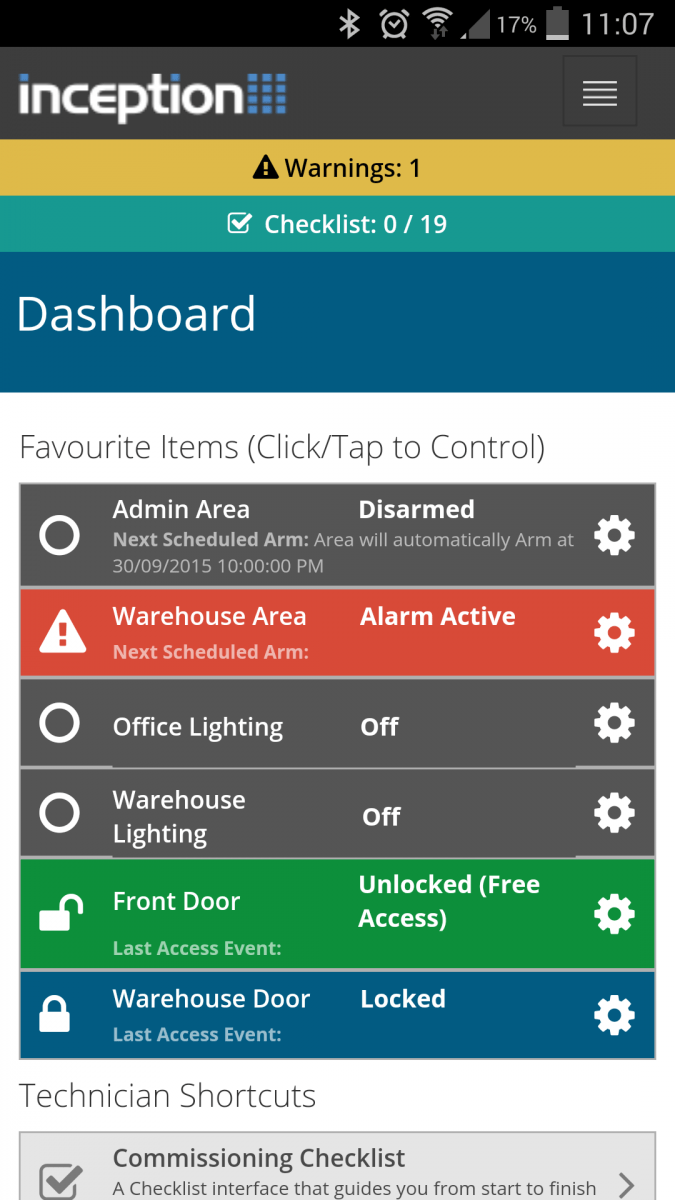
According to Mitchell, there’s no licensing – you simply buy the product and install it. The fact there’s no software because there’s a web interface contributes to the simplicity. The Commissioning Checklist, which leads the installer through the process of system setup, does make installation very simple. Importantly, Inception uses a lot of integriti modules – an 8-zone expander and the 2-door access module. If you want more doors you buy more SLAMS, in you want more inputs you buy more 8-zone expanders. You can choose from different housings to suit the number of expanders you need.
“This entire web interface can be accessed from any authorised interconnected device as long as Inception has internet access,” he explains. “And there’s a section of the checklist specifically devoted to establishing the parameters of use access to parts of the system for management and oversight.”
As well as managing access and alarms, Inception can also handle automation – for instance, when an area is disarmed at a particular time of day, turn off the lights. The capability of this automation is actually very comprehensive but best of all it’s very simple to set up more complex automation events using and/or logic. As Mitchell gives me a taste of the functionality, it’s obvious there’s a lot flexibility here.
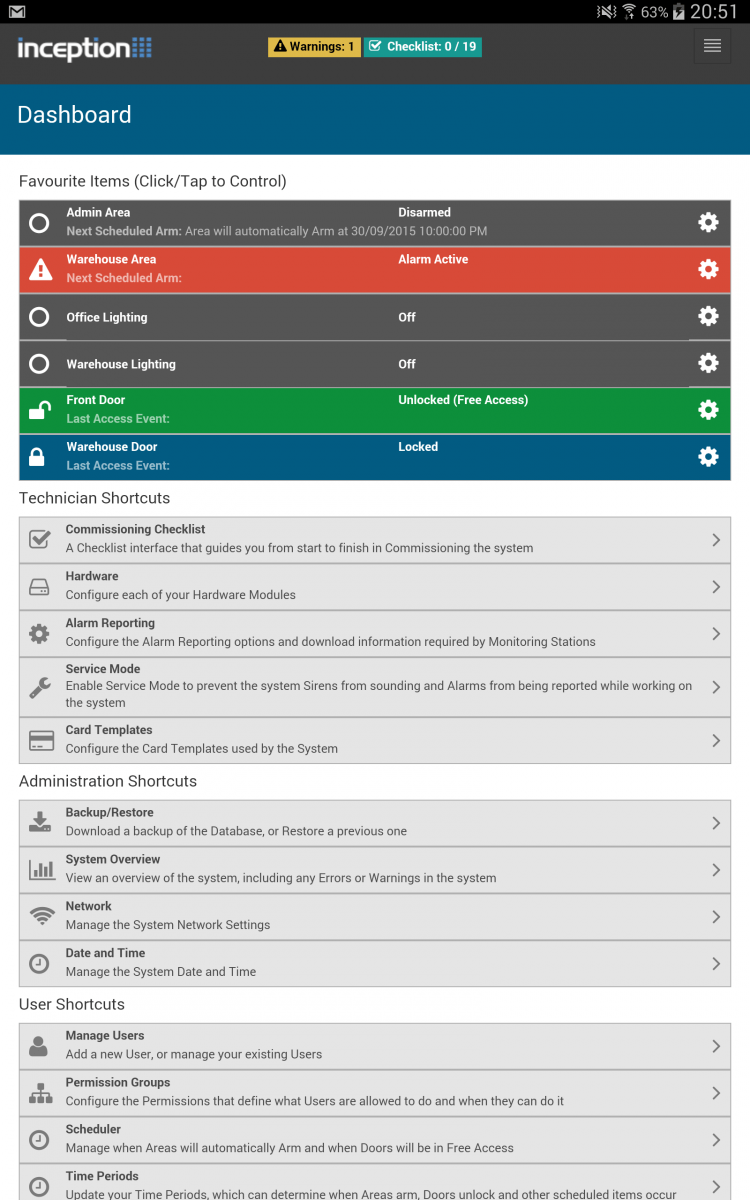
The Commissioning Checklist is not only highly intuitive but highly instructive. It’s not just that following the Commissioning Checklist guarantees a perfect installation – the process itself, which incorporates context-based help tiles – increases installer knowledge by explaining each step as you go.
James Robinson of ICT says the size of the affordable access control market – from 2-50 doors – isn’t easy to quantify but he believes it’s growing fast.
“Market size is a great question but it’s a little hard to put a number,” Robinson says. “I will say this part of the market is growing exponentially, end users are becoming more educated and they understand that the data of a security system can be a great tool in any business.”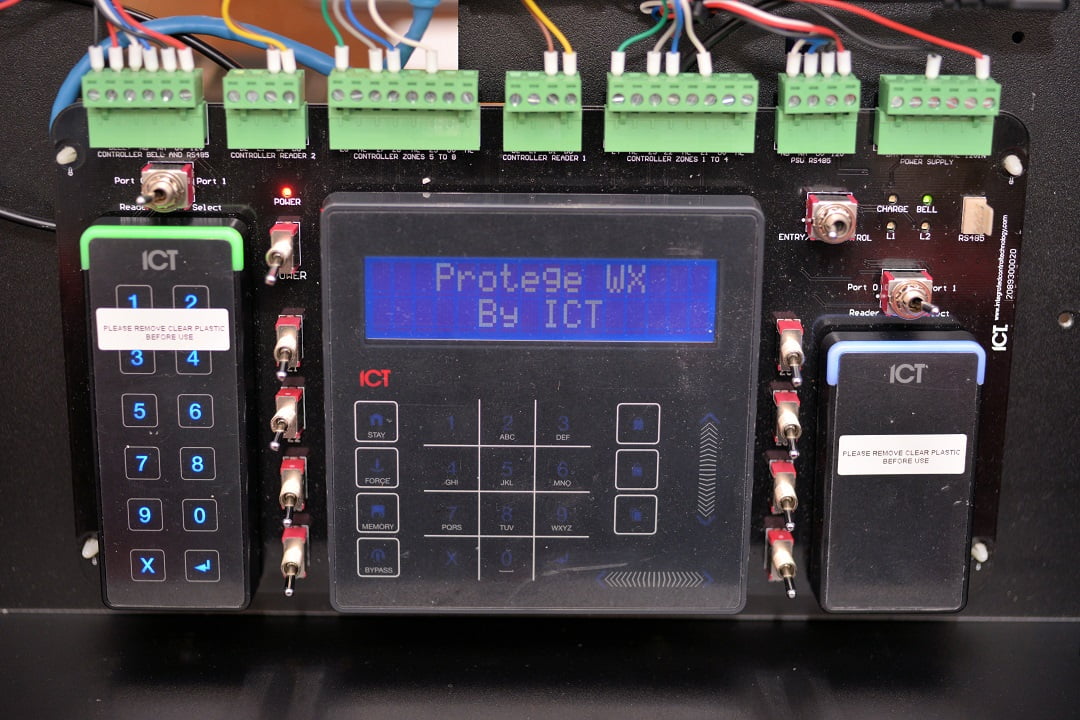
The key technical features of ICT’s Protege WX platform include 1-128 doors (256 readers), the ability to handle 512 inputs and outputs for security and automation functions, and 8 elevator cars, each handling 32 floors. The system also has a full suite of programmable functions built in, allowing for logic control and automation in its own right but also we have equipped it with an interface for Cbus and SAVANT.
We also have a fully open (and free) Automation & Control protocol available making integration with any automation platform a breeze for someone with the technical capability to do so.
From the point of view of installers and end users, which general characteristics are most important at this level of the market? Ease of installation and commissioning? Simplicity of operation? Absence of licensing fees? All these and more?
According to Robinson, installers and end users have 2 very different use cases for these products.
“For integrators, ease of installation and commissioning is definitely high on the priority list, in these projects product selection, time to install and commission all impact on the margin made from a project, so having a product that goes in and works is very important,” he says.
“I also think for an integrator the fact a product is simple to operate for the end user is also very important. Much time (often at no charge to anyone other than the company installing) is consumed in training and retraining end users on how to perform simple functions.”
Robinson argues that end user use of computers and computer-driven devices has evolved significantly over the last 5 years.
End users are becoming much more technology savvy, to this end people are no longer afraid of computers and technology-rich devices,” Robinson explains. “If we look back to 5 years ago it would be very rare for an end user to perform the most basic functions of access control, like running a report on access or adding a user and giving them access to their facility.
“It is by us as manufacturers making systems that are much more user intuitive and following similar styles to “windows type” look and feel that it opens this world to end users, so simplicity of operation is definitely the major drawcard for end users. – The easier it is to use the more they will use it…
“When we look at how basic access control is adopted in the market I think it’s fair to say people don’t mind paying for “advanced features and functionality” however it’s important that our products deliver a core functionality at no additional cost other than the initial purchase – there is also an expectation that software updates should come at no cost, if they want it to do more than what it does at its core they understand there are often costs associated with such services.”
How important in this part of the market are capabilities like video surveillance and automation in your experience?
“I think these features are quickly becoming more and more desired, for example a security system is a very logical place to start some basic level of automation, why leave lights turned on when the building is armed, the access platform can be programmed to turn these lights off and vice versa.
At a CCTV level the current trend is to have a separate platform to handle this as there are many more things to consider here such as storage, recording settings etc… however being able to see what is happening at a door from the access system is highly desirable.”
Robinson says more end users are choosing to interact with security solutions via mobile devices but installers are not so driven.
“For an end user having an app as part of the user experience is becoming mandatory,” he explains. “Being able to arm/disarm an alarm from a smart phone or even remotely open a door is a base expectation these days and the capabilities of apps and expectations on what an end user can do with a system is expanding exponentially. As manufacturers, we have to ensure we meet and exceed these expectations.
“At an integrator level, I am not quite sure it is as relevant. Generally, an integrator is more focussed on initial configuration and setup of the platform, having day to day access an operation of a client site is generally left with the end user which is what apps are designed for.”
What new releases do you have in the wings in 2017? What should we be looking out for?
“Without giving to much away we have several new products planned that will further extend the capabilities and reach of the WX product,” Robinson says. “It’s an even mix between new hardware products for integrators to use and new features, functions and services for the WX platform that our existing and new clients can adopt to further validate their investment in our products.”
Next is line is CS Technologies, which has specialised in this part of the market for more than 15 years by providing feature-rich intelligent controllers at very low cost. Another key aspect of CS Technologies’ offer is powerful free software, which further reduces the cost of the EVO range. In terms of functionality, EVO 2 and 4 door boards combine access control, intrusion, lift control and automation; including tenant air conditioning control and integration to several CCTV systems, all from the one software platform.
Key technical features of the EVO access control solution include 2 or 4 door controllers with 4-way alarm boards. Being modular, both systems are hugely expandable with no need to swap out controllers. Out of the box, EVO2 2 door controller boards can have 2000 users, many access levels, public holidays, and time zones, on-board transaction memory is up to 1000 transactions. Meanwhile, EVO4 4 door controller boards can have 20,000 users, many access levels, public holidays and time zones, while on-board transaction memory is up to 20,000 transactions.
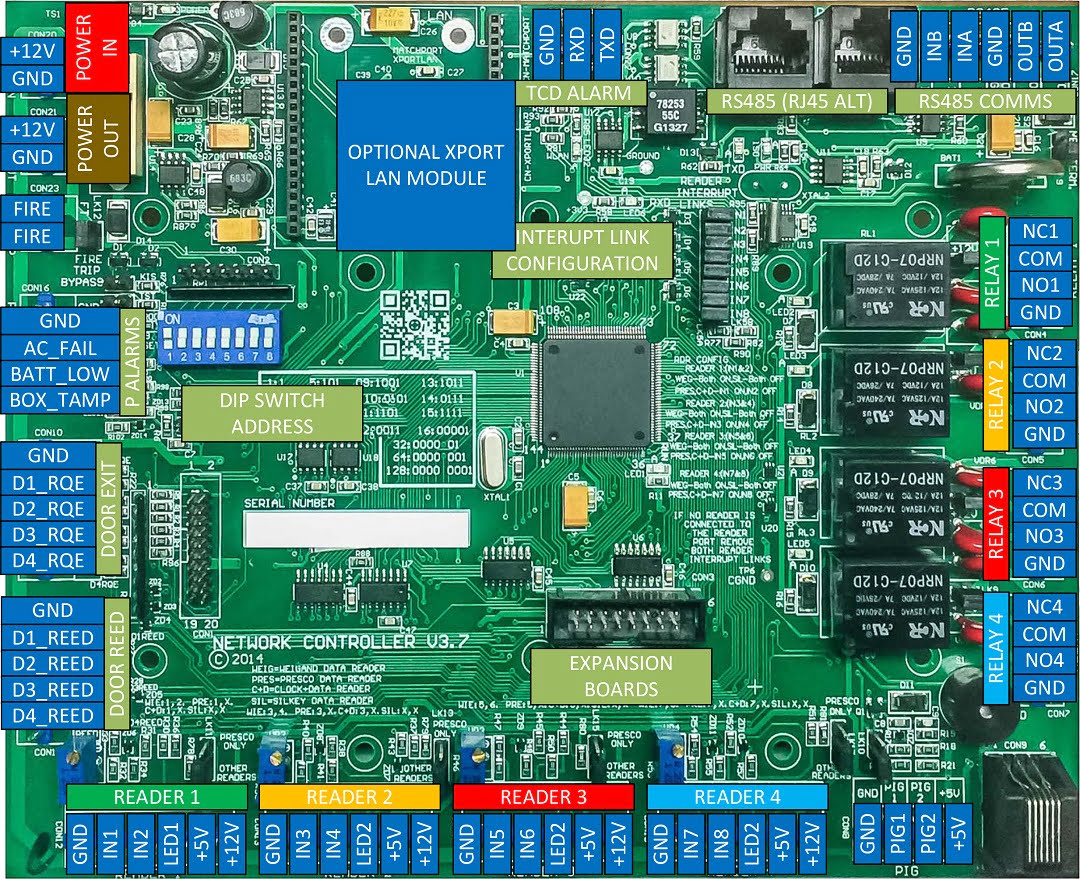
According to CS Technologies, Chris Fitzpatrick, the characteristics most important at this level of the market revolve around ease of use for installer and the end user, but there are other things to consider.
“CS Technologies has worked very hard in the Australian market place to provide easy to use, install and program products for both the installer and the end user,” says Fitzpatrick. “The product was developed and enhanced from 15 years of feedback from the installers and end users to meet most of the suggested changes to make the overall experience of installing and working with the product easier. The software for the system is free and fully optioned – buy one board you get the complete software package able to communicate with hundreds of controllers or systems.”
When it comes to integration with video surveillance and automation, Fitzpatrick says integrating into one system helps sell the system.
“The end user wants to go to one interface to get all their security information,” Fitzpatrick says. “Being able to combine all functionalities together is a great selling point even if all possible features are not employed when the system is commissioned.
“We think modern security solutions should integrate access control and CCTV, and in CS Technologies case this is at no additional cost. Dahua, Hikvision and SPR have been interfaced to the Evolution management software so the end user can search one platform when searching for access control, automation or CCTV incidents.
“Supporting these functionalities, CS Technologies has had mobile applications for several years for iPhone, android, PC and iPads to give our clients the ability to program the system and action events and drive automation from their mobile device. In 2017 we will be working to integration with more devices, as well as cloud data storage.
“We will be working on additional CCTV systems, as well as new POS software. We already have more than 50 completed integrations for market areas such as self-storage, 24-hour gyms, access to golf clubs and caravan parks, and plenty more. The next major addition will be storage in the cloud to operation of sites, buildings via the cloud.”
Another key player in affordable access control is Paxton and Wayne Krahner of local supplier, Security Distributors Australia, says the 2-50 door market covers the majority of access control system installed – approximately 70-80 per cent of the market – and is a part of the market where Paxton Net2 is particularly strong.
“Paxton offers a range intelligent door controllers that can connect to the LAN/WAN and can powered by PoE and RS485 networks,” Krahner explains. “We also have a selection of wireless door controllers and door handles and the simplest software in the market.”
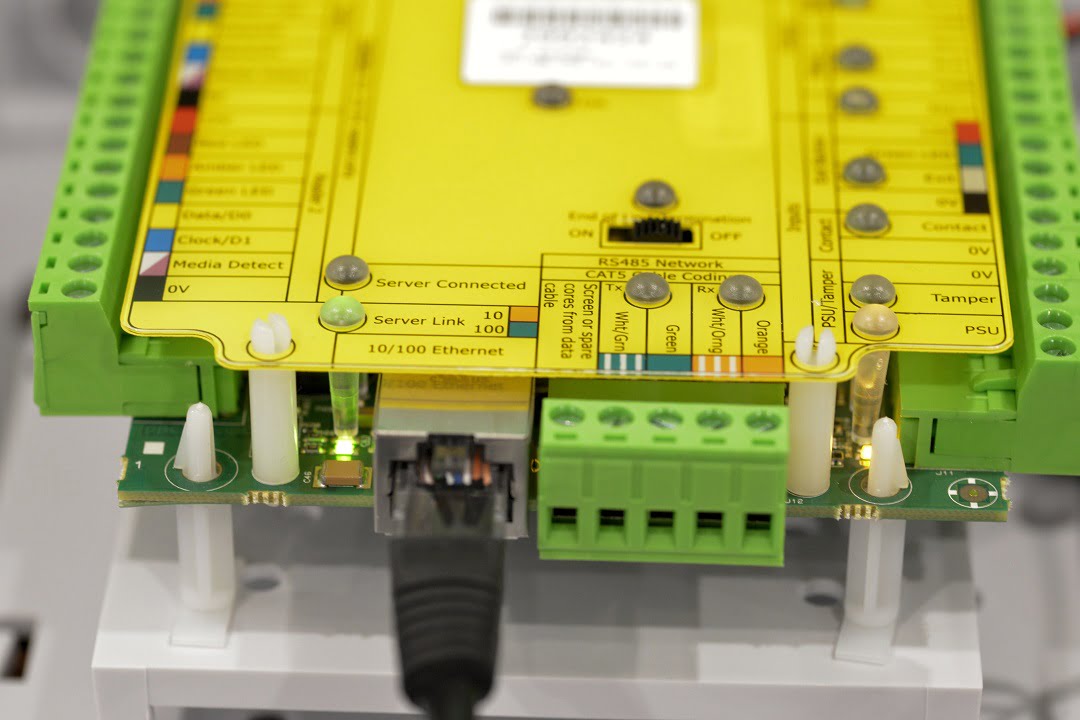
According to Krahner, the most import features of Paxton’s Net2 System include ease of installation.
“For a start, this product is very easy to learn, install and operate,” he says. “There are also no licencing fees whatsoever. You load the software on as many PCs as you like, register as many users as you want up to 50,000, and as many doors as you need up to 1000. Best of all, there’s a 5-year no quibble warranty – if the system breaks, no matter how it breaks, we will replace it free of charge.”
When it comes to integration of video surveillance and automation, Krahner says this is an important part of how Paxton Net2 can add value to any installation.
“Paxton Net2 system allows for integration into many popular 3rd party brands and products including CCTV with Dahua, Hikvision, Nx Witness, Avigilon and Milestone,” he explains. “Net2 also integrates with Traka key management, Texecom alarm systems, IEVO biometric readers and Clubware gym management software.”
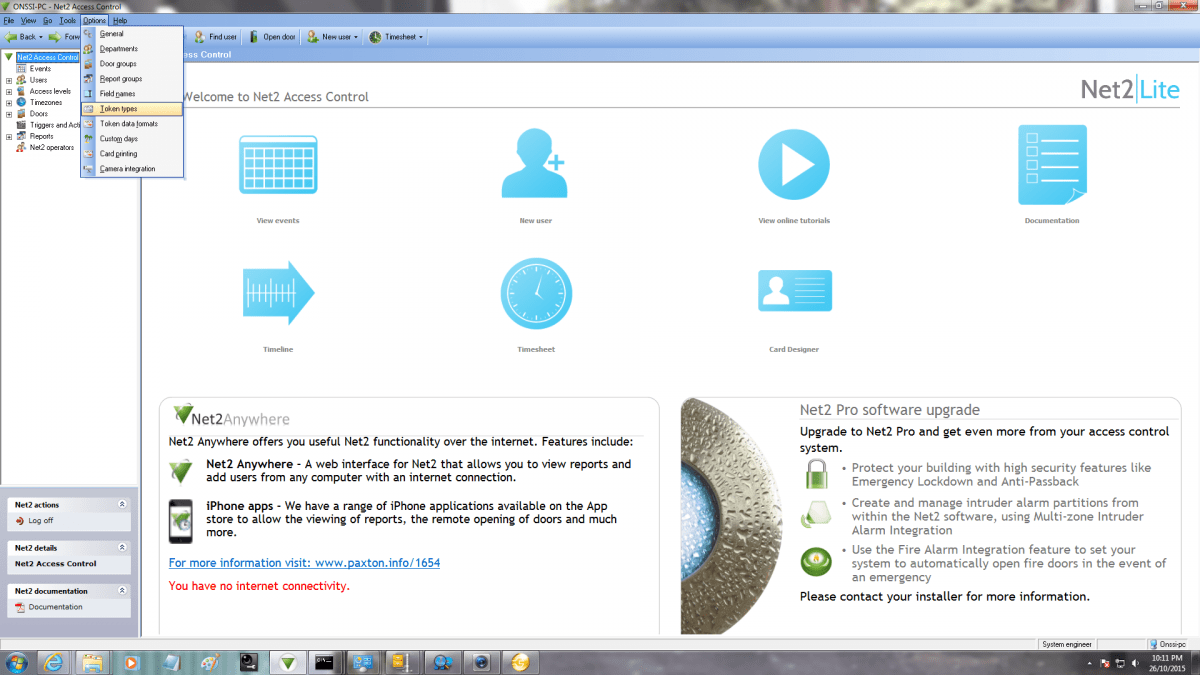
“Management using mobile devices is also becoming more popular and Paxton Net2 offers a range of apps that can open doors, as well as helping to manage roll call and mustering,” he says. “This is a growing area and Paxton will be offering more solutions in the near future.”
According to Anthony Loh of EDS the affordable portion of the access control market in the 1 to 20-door region incorporates a considerable part of the market in Australia – primarily small to medium sized businesses, though he points out there’s particular growth in the market surrounding apartment buildings.
“The key technical features of our solutions that cater for this part of the market in the 1 to 2-door solution would be HID Edge EVO Solo Networked Controller and in the 10 to 32-door area, we have the Vertech Central Station Access Control software using HID Vertx EVO controllers,” Loh says. “Both the solutions are highly capable and thoroughly proven.”
VertX EVO V2000 is a 2-reader access control panel that enables interface with two doors (single reader) or one door (in/out reading). The EVO V2000 handles all online door decisions, door input monitoring and output control and reader interface for up to 2 doors. The solution has 2 inputs per door for door monitor and REX, and 2 outputs per door for lock and AUX. VertX EVO V2000 also includes 3 inputs for AC power fail, battery power fail and tamper, and is powered by a local power supply (12 or 24 VDC).
The system provides a complete and fully functional hardware/firmware infrastructure for access control software host systems. It enables the replacement of head end software without visiting the access control panel, reducing change out costs. V2000 stores a complete access control and configuration database for up 250,000 cardholders.
The solution connects to the host and other devices on a TCP/IP network, receives and processes real-time commands from the host software application, reports all activity to the host; reports supervised inputs /alarms with 255 priorities and provides fully functional offline operation when not actively communicating with the host access control software application, performing all access decisions and event logging.
Other features include an interface for 2 Wiegand or clock-and-data readers; inputs for 2 door monitors, 2 REX switches, AC fail, battery fail and tamper, non-latching relay outputs rated 2 A @ 30 VDC, 2 door strikes (configurable), 2 auxiliary devices (door held/forced alarm, alarm shunt, host offline (communication down), or general purpose). When it comes to market drivers, Loh believes that while there are a number of characteristics that are important at this level of the market, price is the key.
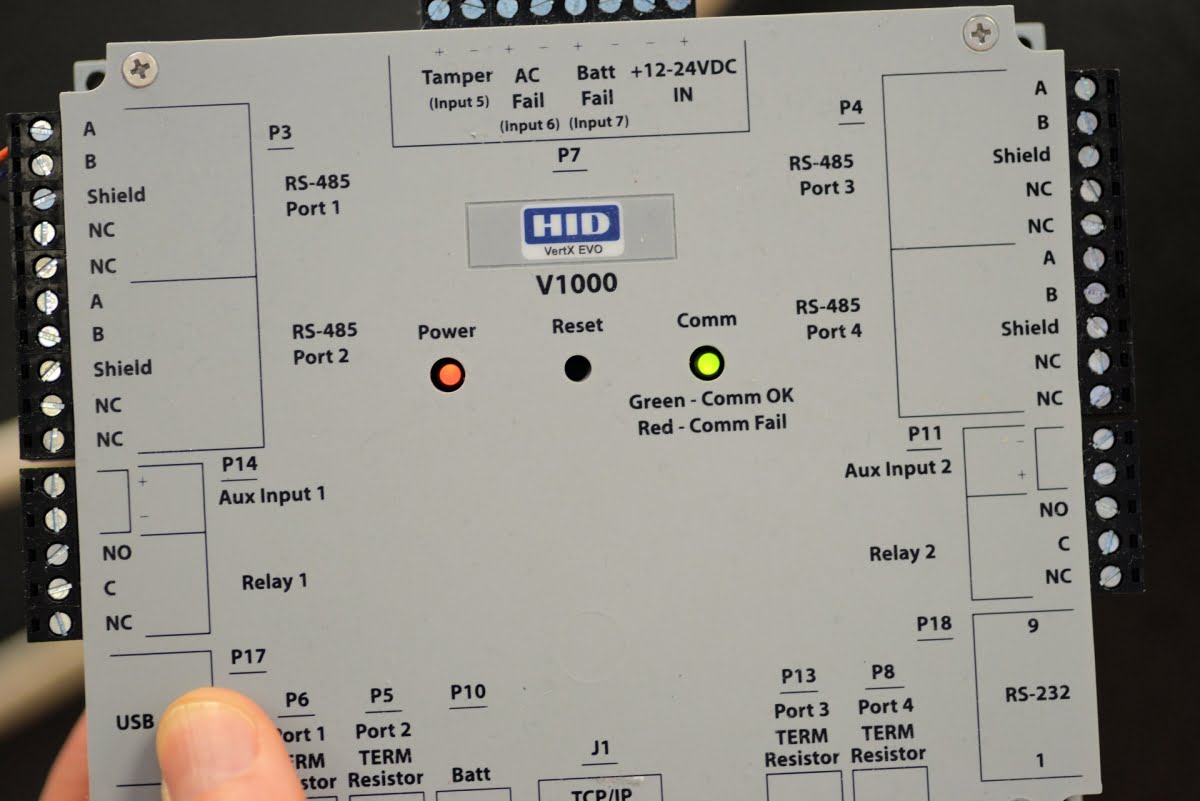
“Lowest cost across the whole solution is really a major factor above all else in the small to medium market,” he explains. “Fancy features like OSDP, automation or analytics are not important at this level. Characteristics like ease of installation/commissioning and less after hour/post-installation support are important because intrinsically they all contribute to reduced cost.”
How important in this part of the market are capabilities like video surveillance and automation in Loh’s experience?
“Video surveillance is important and especially the ability for self managed/remote viewing which is becoming more standard now,” he says. “Video analytics is probably not so important at this level, especially if there is a significant cost increase and automation wouldn’t be too important at this level either.”
When it comes to installer and user interfaces, Loh says there are changes.
“Interaction with mobile devices and IOT is definitely being required more these days and more businesses are heading towards smart offices,” he explains. “Video surveillance via mobile, mobile physical access using Bluetooth/NFC and HID readers will soon be able to configure settings via a Mobile app. So yes, there’s a big difference in the way users and installers expect to be able to manage access control devices that reflects increasingly familiarity with smart mobile devices.”
When it comes to the year ahead, Loh says there are a number of solutions to keep an eye out for.
“There’s the HID Mobile Access Readers/Solution, the HID Bioclass SE reader, the HID U90 UHF reader with a special UHF ISO card (not self-powered), there’s HID EasyLobby Solo, which is a new standalone version visitor management solution, there’s the HID reader manager app, which allows configuration of reader functions including LED, buzzer, keypad outputs via a mobile app. We’re also looking forward to the IDCUBE Access360 access control solution with HID Vertx controllers.” ♦












